Here is a little more progress on Chris’ guitar. Things are going slow (but good.) This first shot is just a look at the back all braced up. I will do some more “modal analysis” (nonsense) to get the bracing where “I” want it to but it is very close to where “I” want it now.
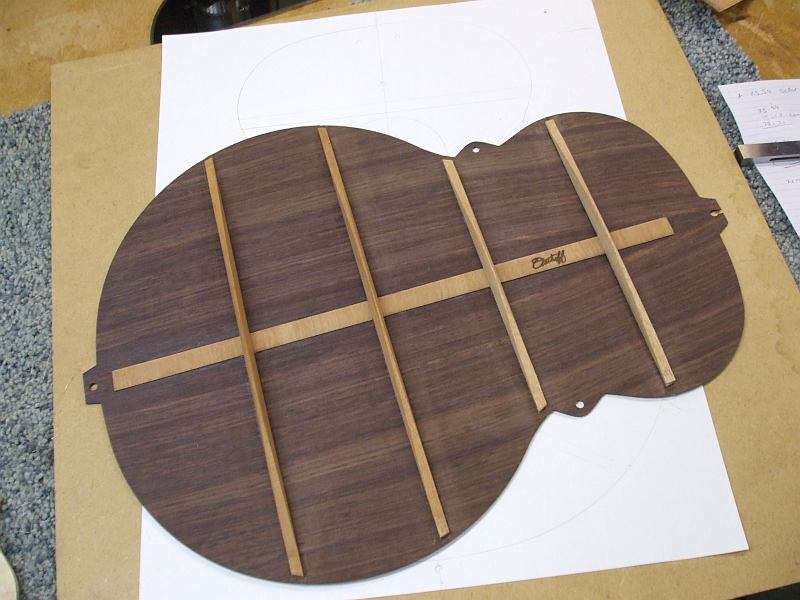
Speaking of nonsense, her is a look at one of the modes of top and in particular this one is related to the stiffness along grain. What impressed me about this top is the symmetry of the pattern(s,) and once braced I will be able to look a little closer at the “free plate modes” to help “guide” me in my decisions during the final carving (voicing) stage of the top. While this stuff gives me numbers and visual representations, I also do a lot of traditional tapping/flexing/sniffing/feeling/listening/scratching etc. It is all of this feedback information that I use to guide me in making decisions about the voicing process.
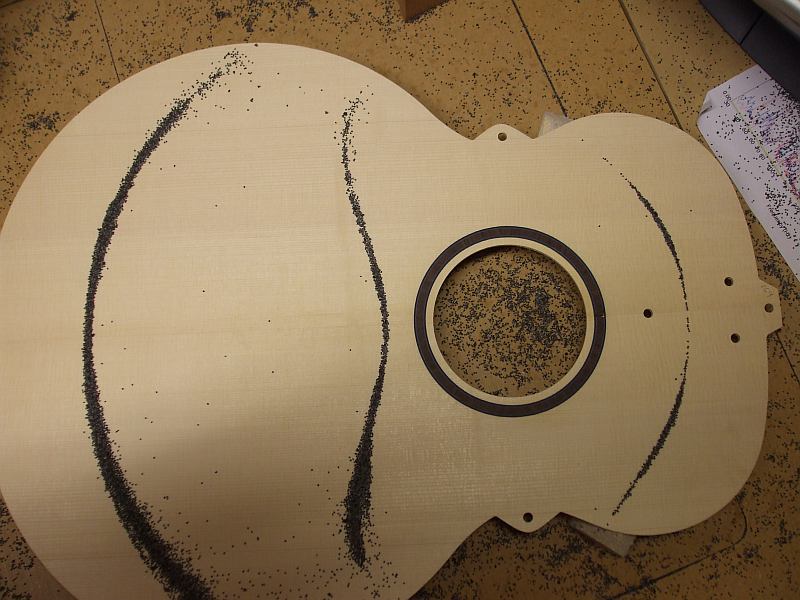
This photo shows the Upper Traverse Brace being dry-fitted. This brace has piece of carbon fiber going across the top. I think I commented earlier on some of the testing I did to finalize on this design. Howard Kleeper does something similar and when I was working on some other designs, I came across a picture of what Howard was doing and this one seemed easy (and easy is good.) The testing gave me good results and decided to go on with it. The smoke Lexan fixture is there to position the Upper Traverse Brace exactly where I want it as it will eventually tie to and become part of the fretboard extension/neckblock system.
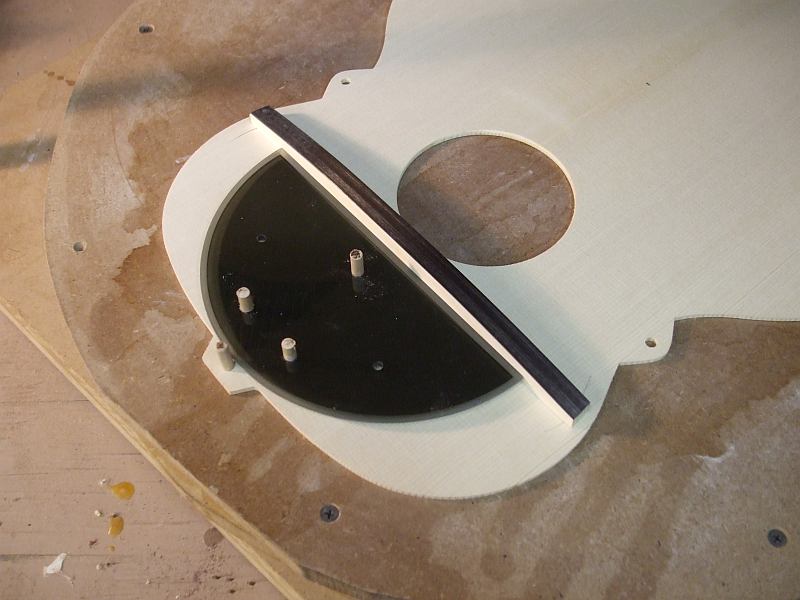
Here the “oversized” x-brace is being glued down on the go-bar deck. It will get craved and shaped as part of the “voicing” process.
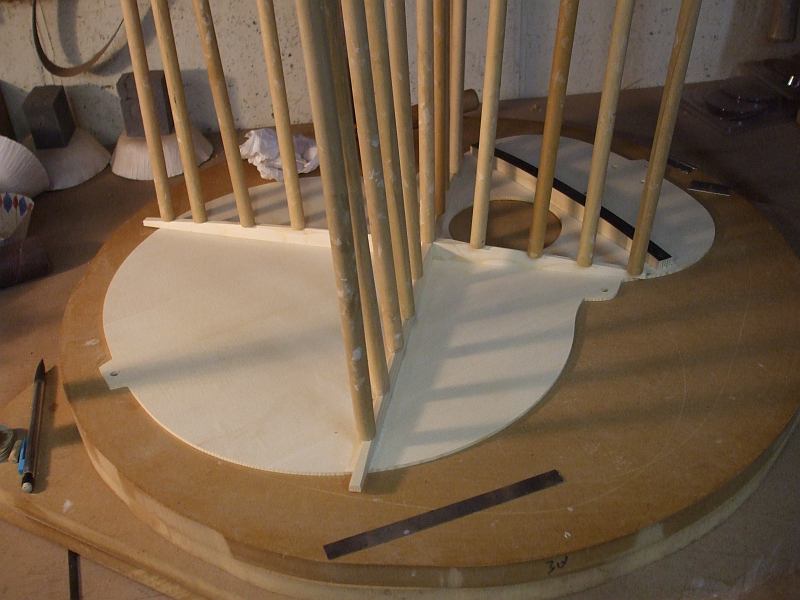
I also got the ebony binding bent. Ebony can be a challenge to bend, but this went well (so far.) I also bend the side purfling without gluing it to the binding as sometimes the heat from the bending process can release the glue. It is more difficult to bend a .020” thick piece of (in this case blue) purlfing material along is longer axis, but when it all comes together, this results in a nice seam.
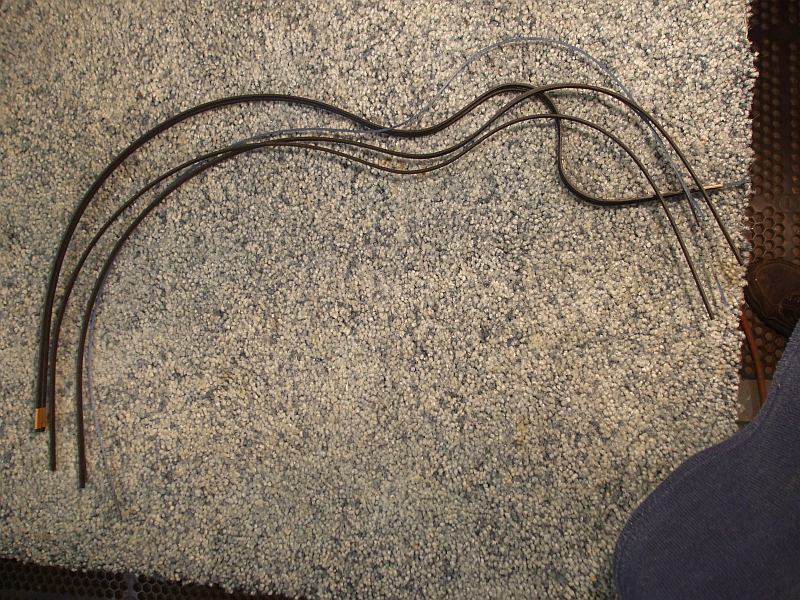
That’s it for now … a lot of carving/tapping/listening/testing coming up this week, so there probably won’t be too many pretty pictures in the near future but hopefully some progress will be made.